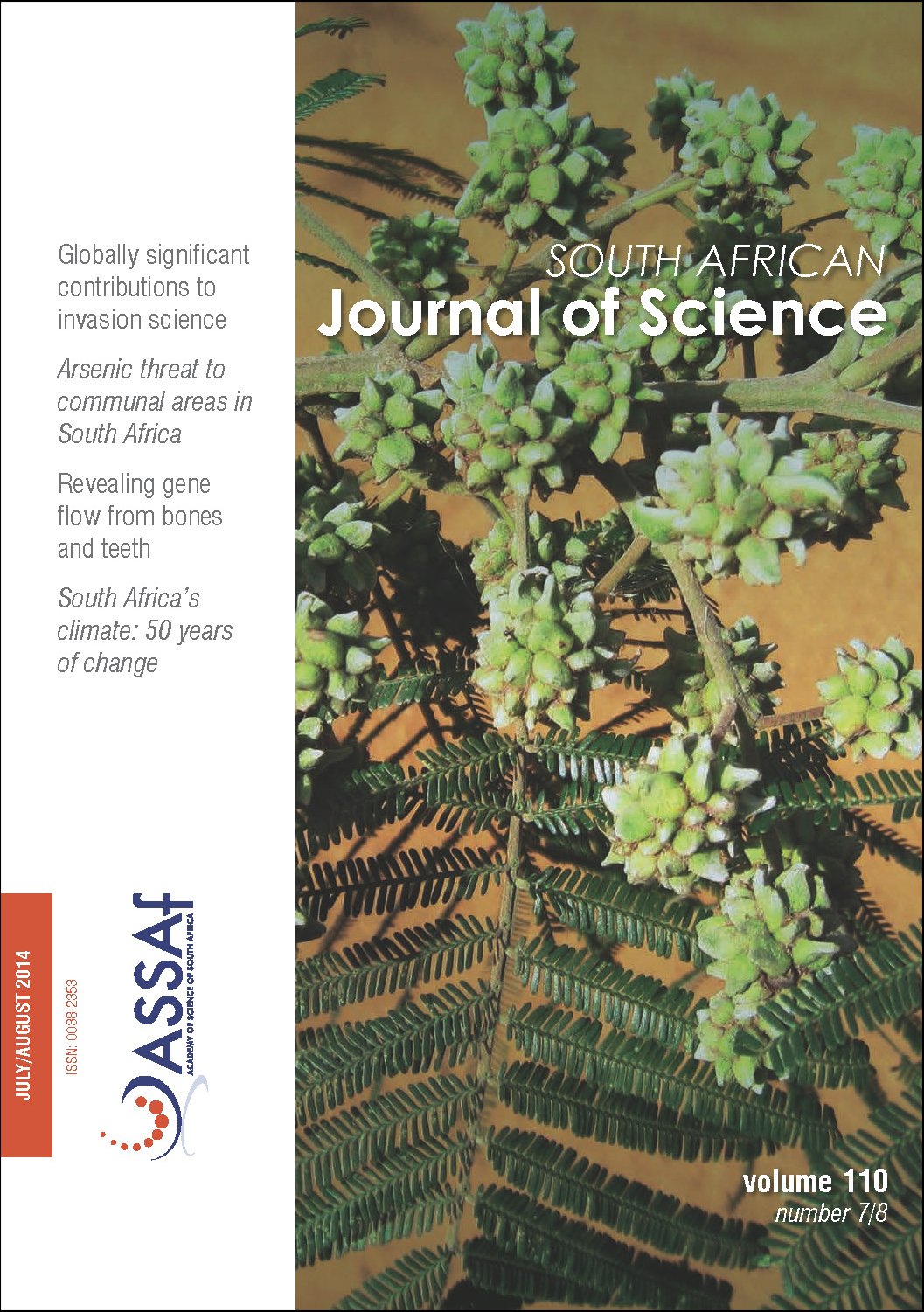Observed and modelled trends in rainfall and temperature for South Africa: 1960–2010
DOI:
https://doi.org/10.1590/sajs.2014/20130353Keywords:
rainfall, temperature, historical trends, station observations, climate modelsAbstract
Observed trends in seasonal and annual total rainfall, number of rain days and daily maximum and minimum temperature were calculated for a number of stations in South Africa for the period 1960–2010. Statistically significant decreases in rainfall and the number of rain days are shown over the central and northeastern parts of the country in the autumn months and significant increases in the number of rain days around the southern Drakensberg are evident in spring and summer. Maximum temperatures have increased significantly throughout the country for all seasons and increases in minimum temperatures are shown for most of the country. A notable exception is the central interior, where minimum temperatures have decreased significantly. Regionally aggregated trends for six water management zones covering the entire country are not evident for total rainfall, but there are some significant trends for the number of rain days. Temperature in these zones has increased significantly for most seasons, with the exception of the central interior. Comparison of the observed trends with statistically downscaled global climate model simulations reveals that the models do not represent the observed rainfall changes nor the cooling trend of minimum temperature in the central interior. Although this result does not rule out the possibility of attributing observed local changes in rainfall to anthropogenically forced global change, it does have major implications for attribution studies. It also raises the question of whether an alternative statistical downscaling method or dynamical downscaling through the use of a regional climate model might better represent regional and local climatic processes and their links to global change.
Published
Issue
Section
License

This work is licensed under a Creative Commons Attribution 4.0 International License.

All articles are published under a Creative Commons Attribution 4.0 International Licence
Copyright is retained by the authors. Readers are welcome to reproduce, share and adapt the content without permission provided the source is attributed.
Disclaimer: The publisher and editors accept no responsibility for statements made by the authors
How to Cite
- Abstract 4367
- PDF 2768
- EPUB 223
- XML 282












.png)